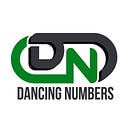Unlocking Success: Setup Chart of Accounts for Nonprofits in QuickBooks
Setting up the chart of accounts is a pivotal task for any nonprofit organization using QuickBooks. It’s not just about numbers; it’s about ensuring financial stability, compliance, and transparency. In this comprehensive guide, we will walk you through the process of setting up the chart of accounts for nonprofits in QuickBooks. You’ll gain insights into best practices, tips from experts, and answers to common questions. Let’s embark on this journey to financial efficiency and success!
Setup Chart of Accounts for Nonprofits in QuickBooks
Your chart of accounts is the backbone of your nonprofit’s financial system. It categorizes income, expenses, assets, and liabilities, providing a clear view of your organization’s financial health. Here’s a step-by-step guide to setup nonprofit chart of accounts:
1. Begin with a Solid Foundation
Start by creating accounts that reflect your nonprofit’s structure and mission. This includes accounts for donations, grants, program expenses, and administrative costs.
2. Customize Account Names
Tailor account names to your organization’s needs. For instance, instead of “Sales Revenue,” use “Donations Received” to accurately represent your income sources.
3. Establish Sub-Accounts
Use sub-accounts to add granularity to your financial tracking. Under “Program Expenses,” create sub-accounts for specific programs or projects.
4. Set Up Fund Accounts
If your nonprofit manages multiple funds or projects, create separate fund accounts. This ensures accurate tracking of each fund’s income and expenses.
5. Allocate Restricted and Unrestricted Funds
Differentiate between restricted and unrestricted funds by creating separate accounts. This enhances transparency, especially for donors and grantors.
6. Implement Account Numbers
Assign unique numbers to each account for easy reference and sorting. Ensure that your numbering system follows a logical order.
7. Choose Tax Codes Wisely
Properly categorize income and expenses with appropriate tax codes. This simplifies tax reporting and compliance.
8. Review and Revise Regularly
As your nonprofit evolves, update your chart of accounts to reflect changes in financial activities, programs, or fundraising efforts.
9. Seek Professional Guidance
Consider consulting with a financial expert or accountant to ensure your chart of accounts aligns with accounting best practices and regulatory requirements.
10. Leverage QuickBooks Features
Take advantage of QuickBooks’ features, such as tags and classes, to further categorize transactions and streamline reporting.
FAQs
How often should I review my chart of accounts?
Regularly review your chart of accounts at least annually, or more frequently if your nonprofit undergoes significant changes.
Can I make changes to my chart of accounts after initial setup?
Yes, you can modify your chart of accounts as needed. QuickBooks allows you to add, edit, or delete accounts.
What is the importance of fund accounting for nonprofits?
Fund accounting helps nonprofits track and manage resources designated for specific purposes, ensuring accountability and compliance.
Are there any free resources for nonprofit accounting best practices?
Yes, many nonprofit associations and government agencies offer free guides and resources on nonprofit accounting and financial management.
How can I ensure transparency for my nonprofit’s financials?
Maintain accurate records, conduct regular financial audits, and provide detailed financial reports to stakeholders.
Can I integrate QuickBooks with other nonprofit software?
Yes, QuickBooks offers integrations with various nonprofit management software to enhance your organization’s capabilities.
Conclusion
Setting up the chart of accounts for nonprofit in QuickBooks is a crucial step towards financial transparency and efficiency. By following these guidelines, you can streamline your financial management, adhere to regulations, and provide your stakeholders with the information they need. Keep in mind that your chart of accounts should evolve with your organization, so don’t hesitate to make adjustments as necessary. Unlock the potential of your nonprofit’s financial data and pave the way for a brighter future.
